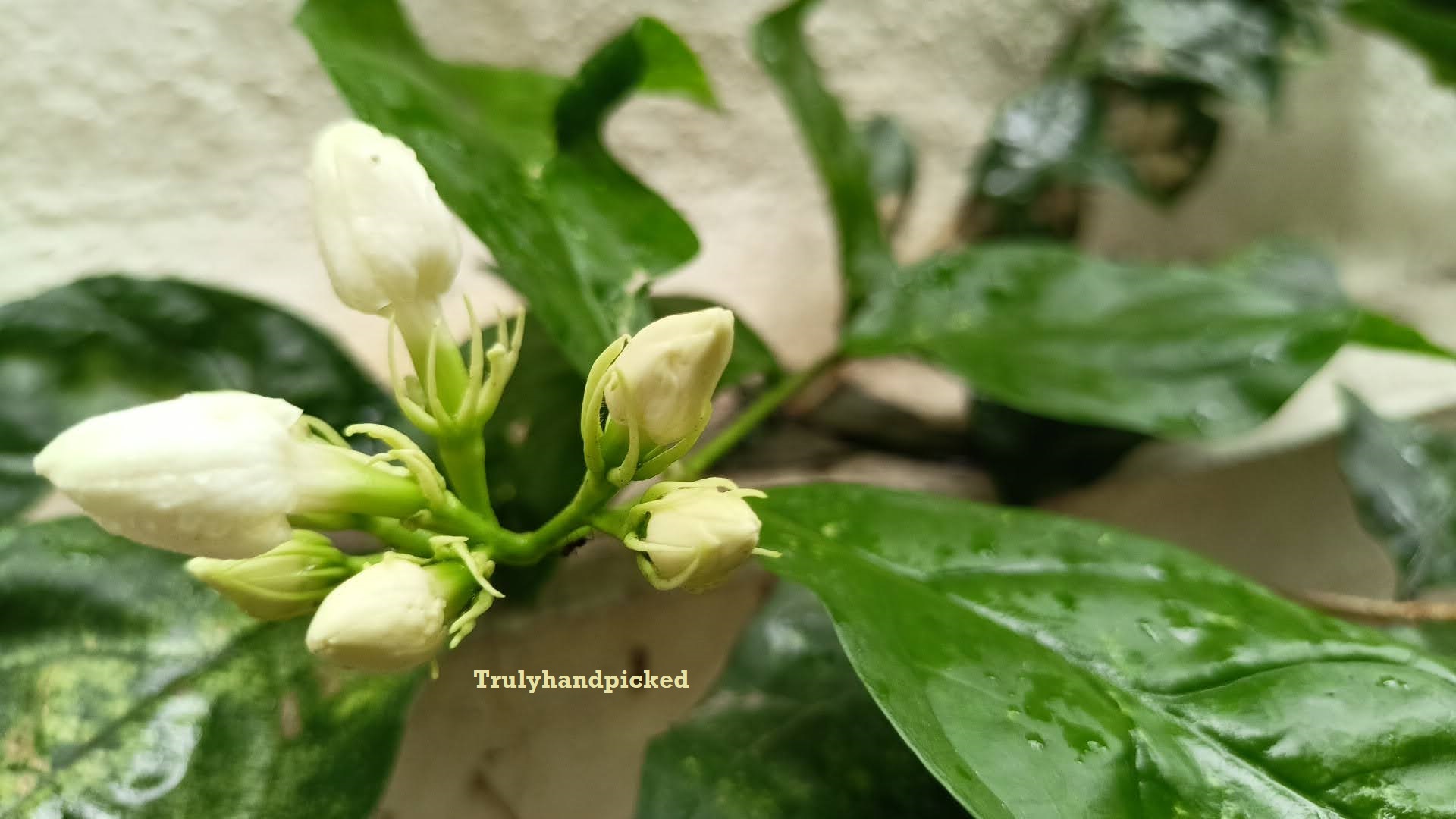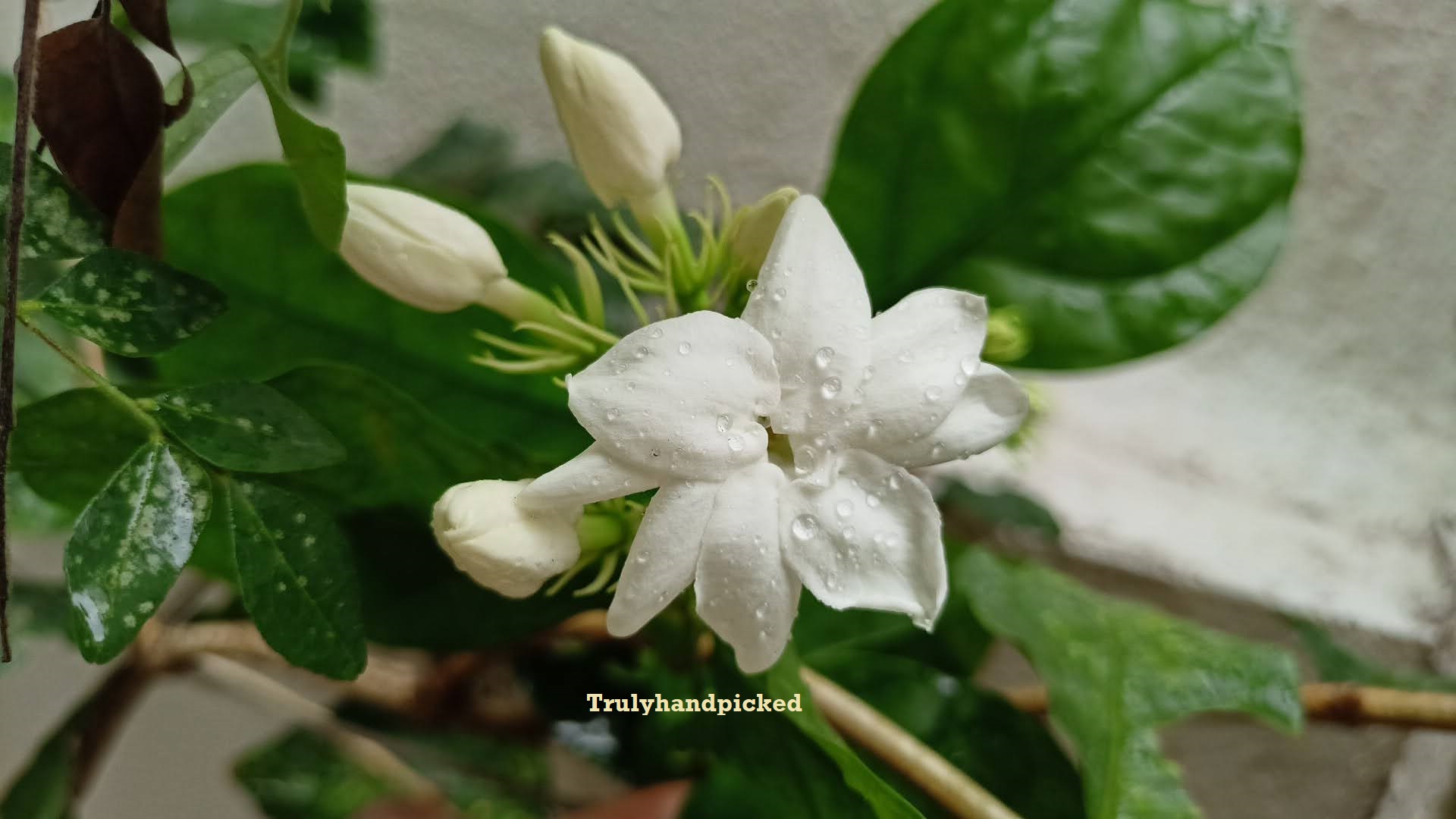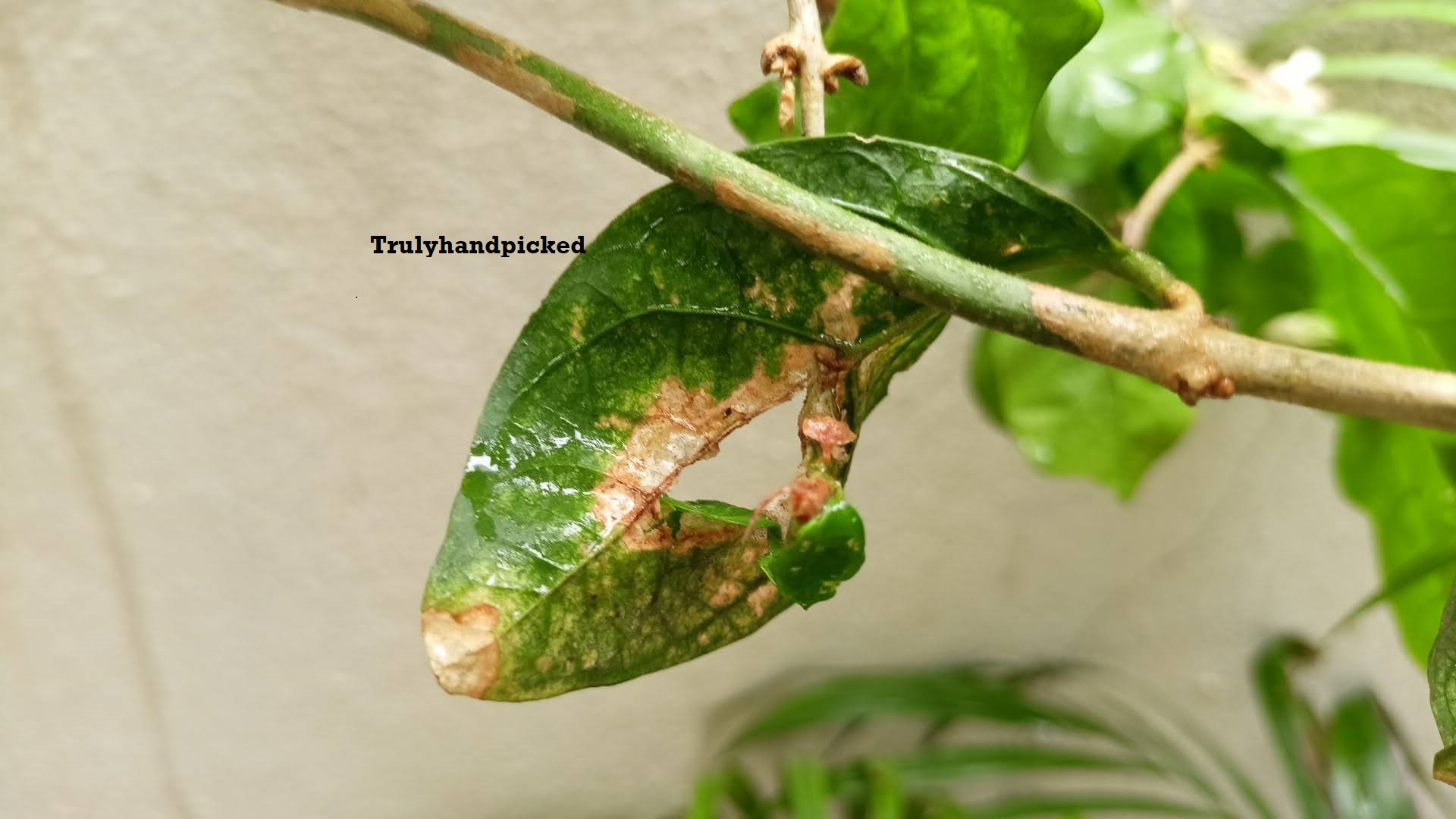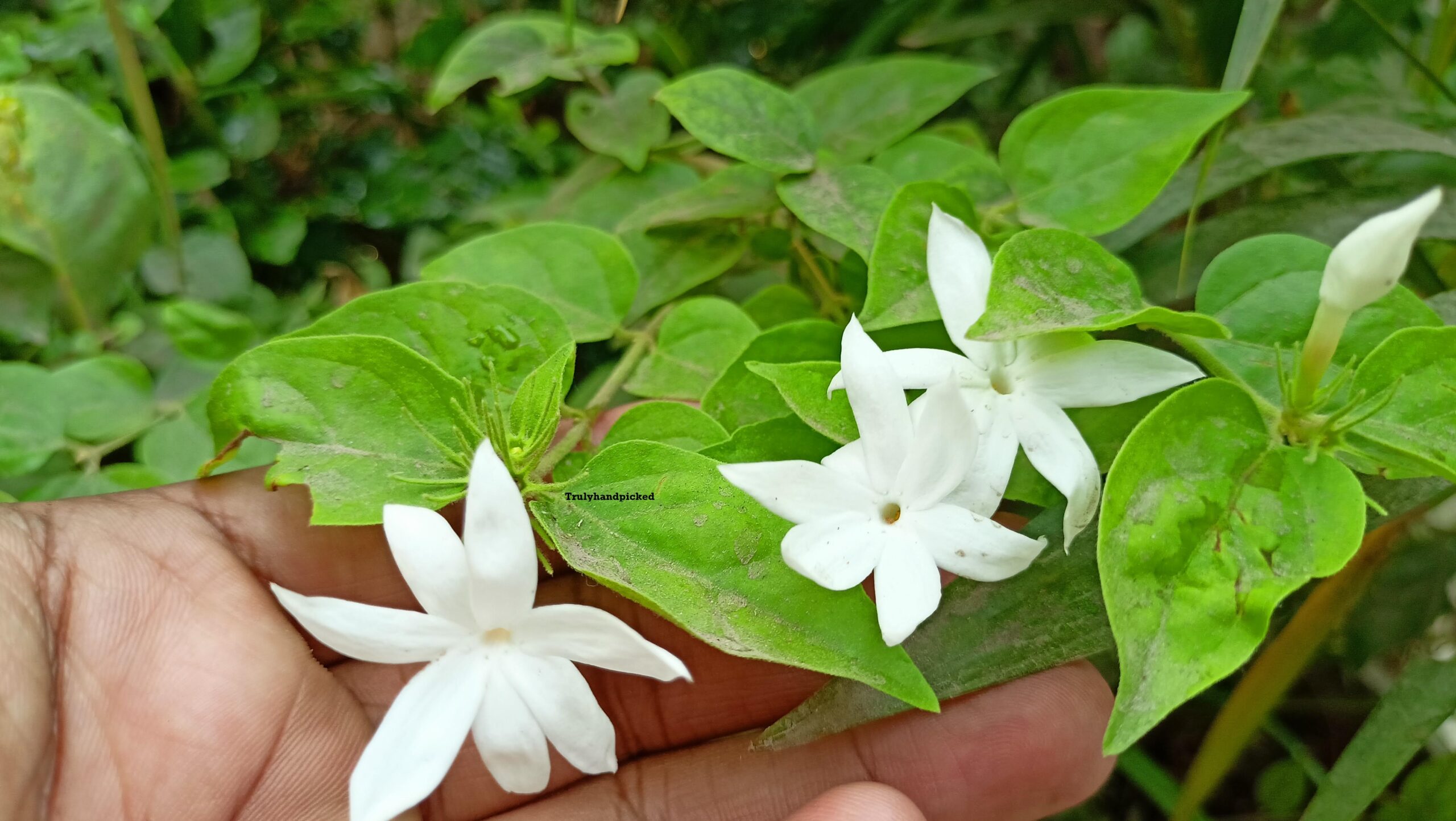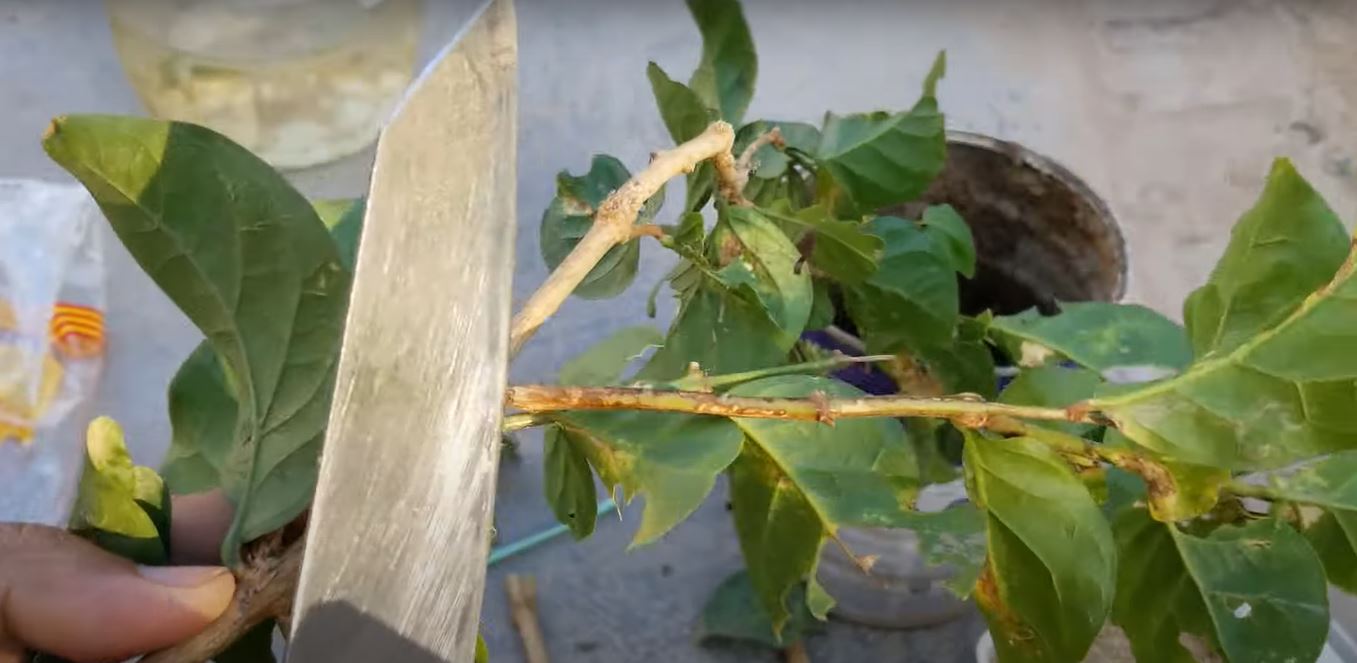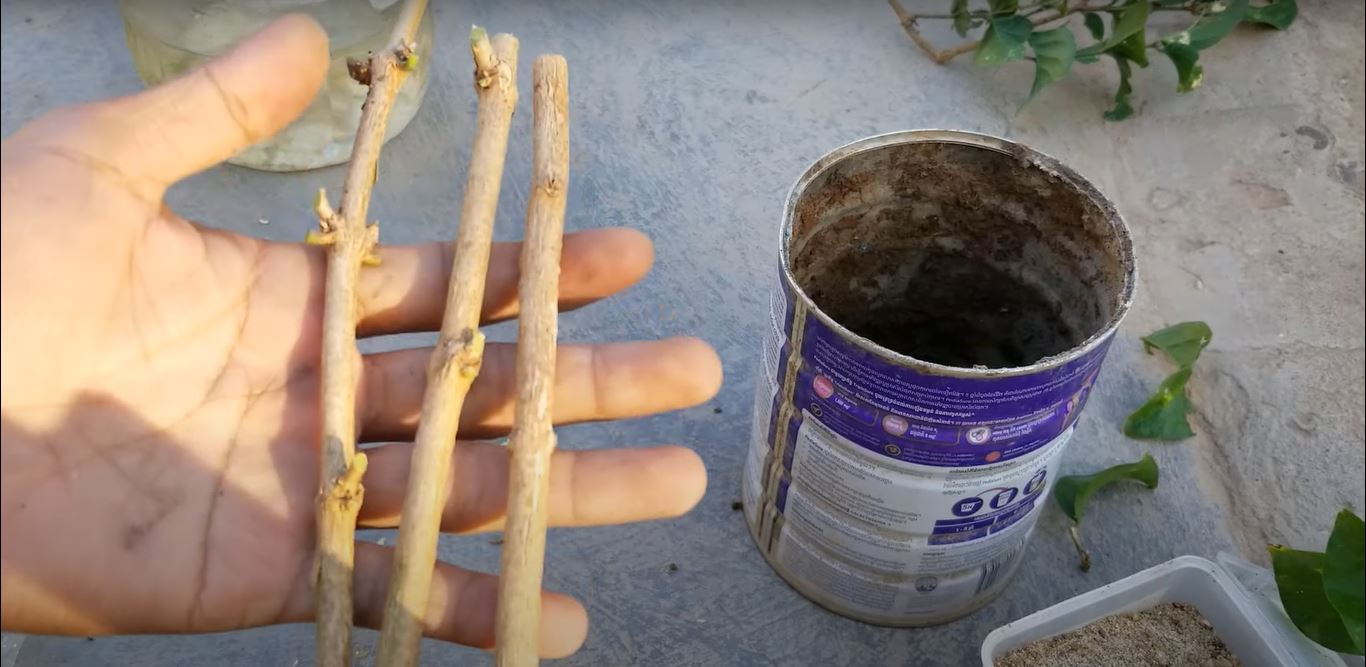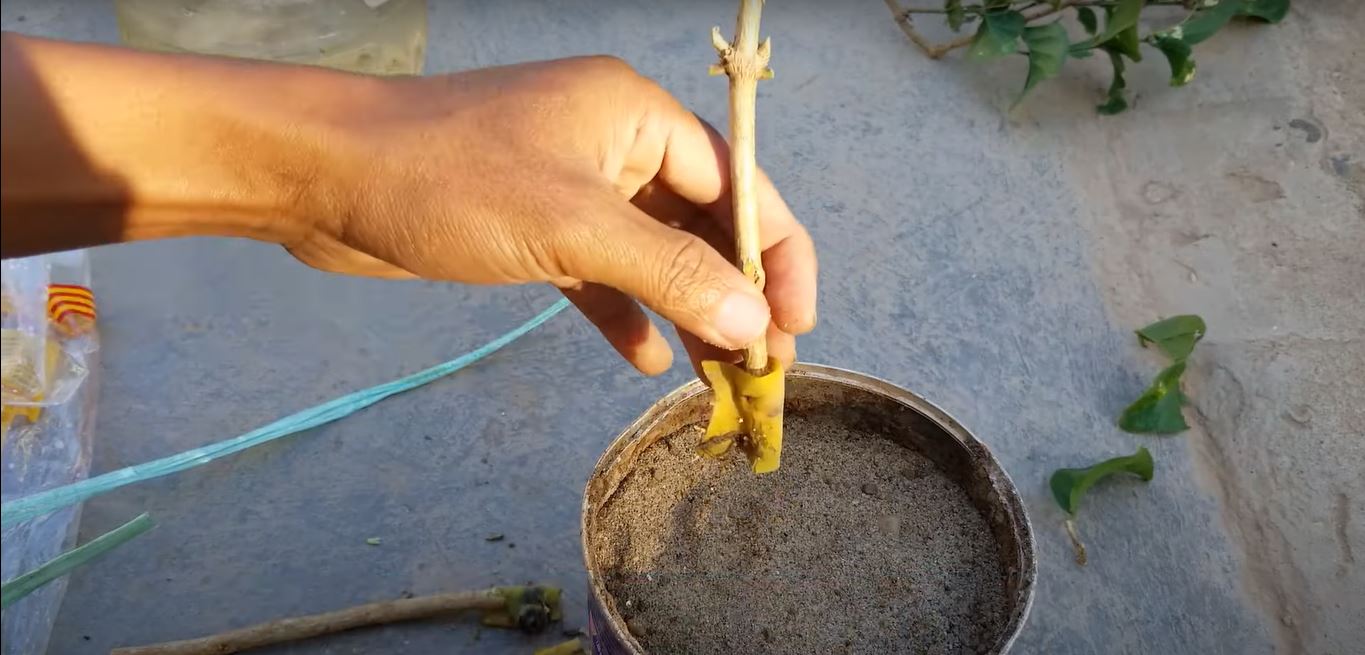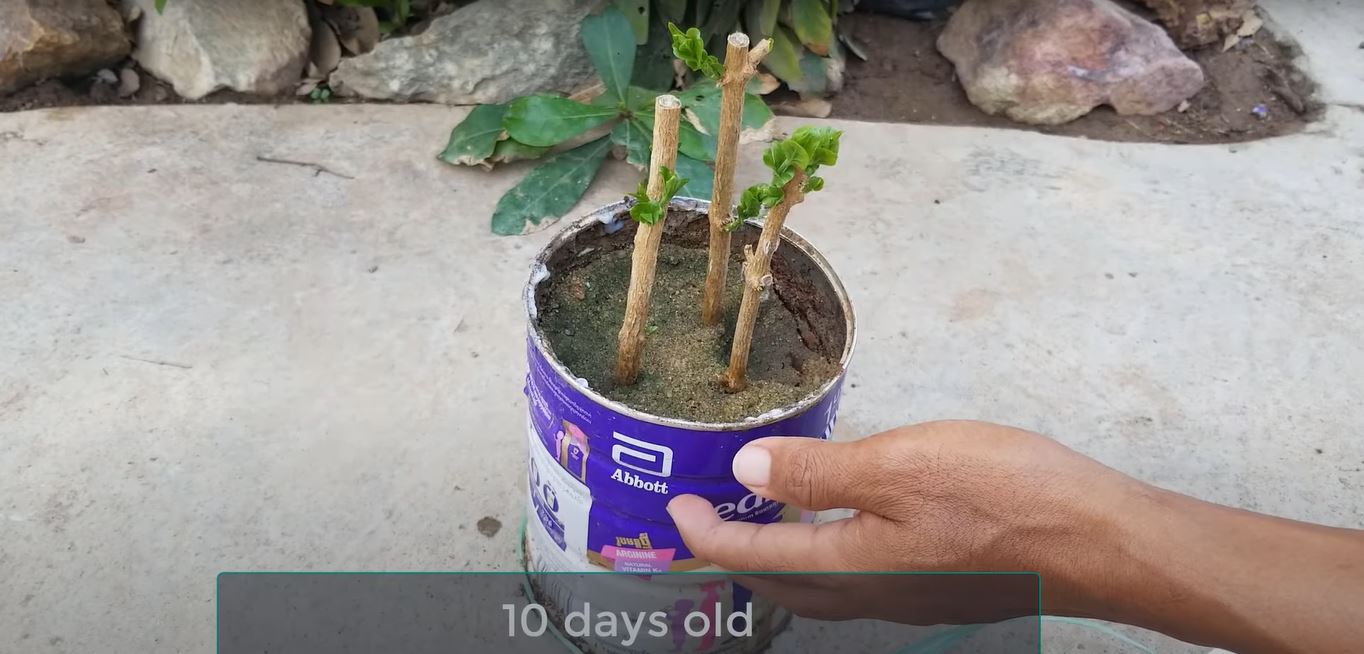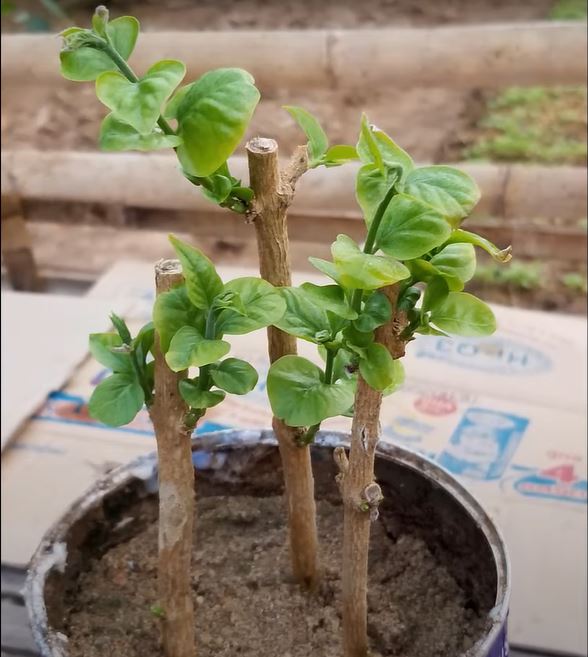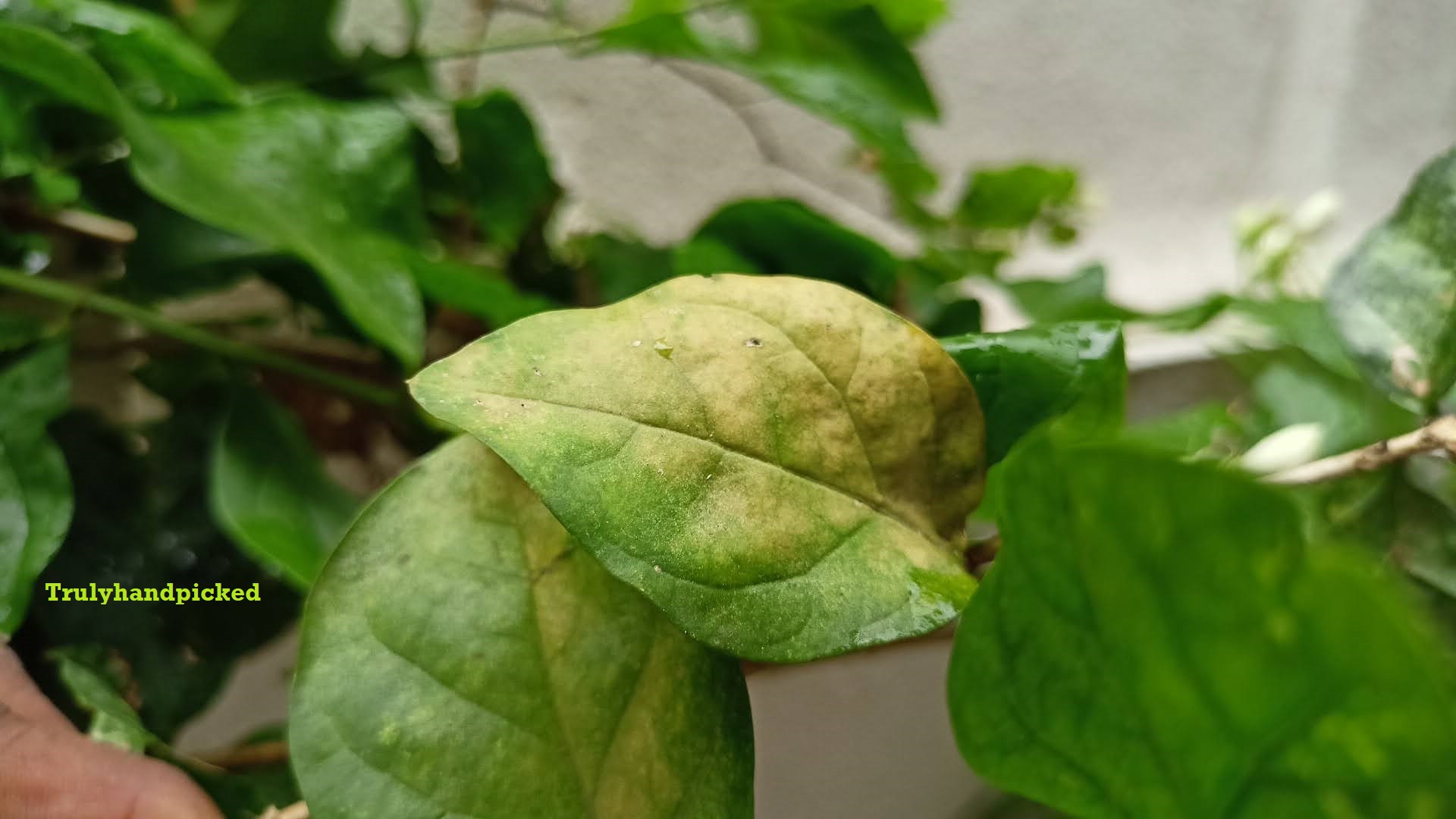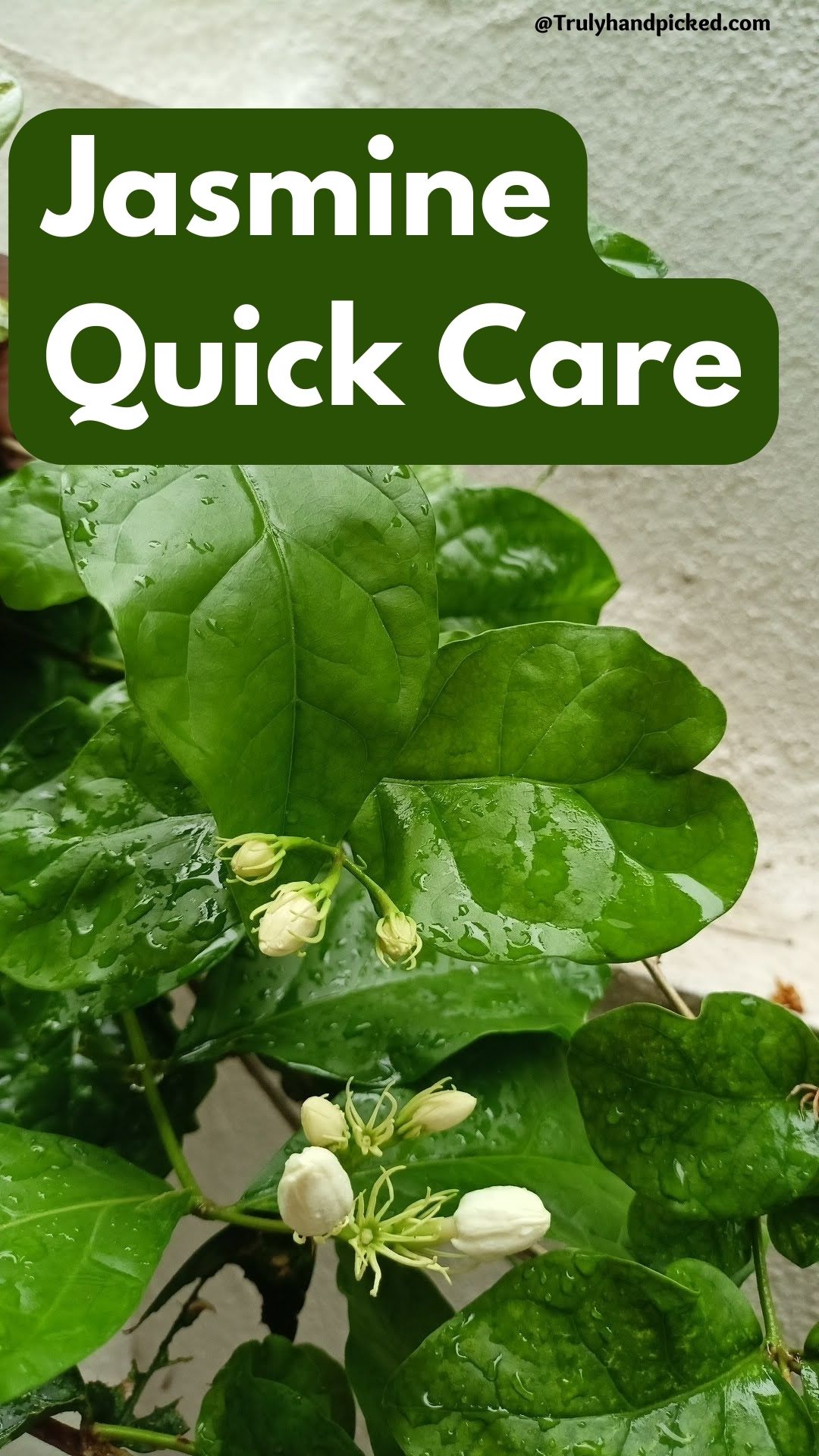Jasmine Loves abundant sunlight and tolerates shade with bright indirect light. Prune your jasmine in late spring or early summer for lush growth and blooms.
Allow soil to turn dry and water twice a week in normal seasons and increase frequency to keep your jasmine plants moist in the peak flowering season.
Jasmine is good to go in pots too. Provided with rich loamy soil, watering soil to keep moist but not soggy and enough bright sunlight will keep your plant happy with aromatic blooms.
Jasmine:
If we say jasmine species, it indicates an ample genus, in this single category. Jasmine plant is a beautiful flowering shrub that mostly grows in vine shape.
This vining flowering plant belongs to the Oleaceae family and is native to warm tropical regions. Dwarf varieties of jasmine species grow best indoors and other genera thrive best in an open outdoor yard.
However, you can cultivate any species of jasmine plant easily in any spot, if the climate is compliant for the plant. Here are some basic growing tips about a jasmine plant we refer to, in this regard-
How to Take Care of Jasmine
Potting Soil and Watering Frequency
Soil: Any species of jasmine plant prefers moderately fertile, loamy, and sandy soil that can drain excellently. Keep the pH level slightly acidic around 6.5-7.5.
Water: Jasmine plant is the thirsty one, so, you need to water your plant twice a week. Try to water the plant in the morning and fulfill the quantity of 2-inch water every week consistently.
Sunlight and Humidity
Sun Exposure: Due to being a good outdoor plant, jasmine can thrive under full sun. however, you can provide the plant sun with partial shade as well. Be certain that your plant could grab 6-8 hours of bright sunlight every day.
Climate: As jasmine is native to tropical territories, it always prefers a warm climate. Try to keep the plant at a temperature between 60° to 75° F with a high humidity level.
Pruning and Nourishment
Pruning: Jasmine is a bushy shrub and thus, you need to prune the plant steadily once or twice, every year. Try to trim the dead, damaged, or discolored stems as well as leaves during this process. The time during the spring ends and summer starts is the best for pruning.
Fertilizer: Try to fertilize your plant once a month and especially during the growing seasons. Apply any organic fertilizer like decomposed scraps, coffee ground, compost tea, etc. in diluted form. Keep the NPK ratio 7-9-5 for the best result.
Pests troubleshooting and Repotting Jasmine
Repotting: Jasmine grows faster and thus you may need to report it every year consistently. Wait till the pot-bound come, before you replant it in a new and wider planter. The season of spring and summer is the best time for doting this process as well.
Pests and Bugs: Aphids, caterpillars, budworms, leaf rollers, webworms, etc. are some common insects, you may find on a growing jasmine plant. Try to get rid of them with horticulture soap or oil spray to treat the plant in a completely harmless way.
Types of Jasmine:
Jasmine contains almost a hundred species in this single category. Here we emerge with the best 5 types of jasmine shrubs, which are easy to grow in a home with moderate care and attention-
- Common Jasmine:
This is the best jasmine category to pick for an indoor garden area due to its super fragrant quality. Common can grow really bushier and thus, try to plant it in a wide planter with proper thriving space.
- Asian Star Jasmine:
This species of jasmine grows best in an open outdoor garden as bushy ground cover. Asian star jasmine is the hardy one that grows tiny yellowish blossoms over deep green foliage.
- Arabian Jasmine:
Arabian jasmine is a long perennial shrub that grows beautiful flowers with high fragrance. This species has heavy medicinal value, apart from its scented eminence.
- Royal Jasmine:
This is a vining jasmine category that grows medium-size white elegant flowers over deep green foliage. this species is hardy enough to tolerate any common house climate and is one of the fastest-growing jasmine kinds your can have.
- Italian Jasmine:
Italian jasmine can thrive in both shrub and vining forms. You can grow this species of jasmine in a hanging basket or as ground cover, depending on the space availability in your house. Deep yellow flowers with double petals design are the main attraction of this species.
How to Propagate Jasmine From Cutting
Suggested youtube video Sokha Chetra: Grow jasmine from cuttings in a sand pot with banana peel as a rooting hormone.
You can regrow any species of jasmine easily from its cutting. Let’s see how to do the propagation job flawlessly in this step by step method-
Supplies You Will Need:
- A fully sterilized pruner
- Rooting hormone
- A clay pot about 6-8 inches long
- Prepared fertile potting mix
- A sprayer or watering can
- A pencil or any sharp object
- A plastic cover that must be transparent
How to Do:
- Find out a freshly grown healthy stem that has almost 5-6 fresh leaves on it
- Cut that stem about 4-6 inches long with a disinfected pruner
- Trim it off exactly below the node, where a leaf grows
- Pluck off 3-4 leaves from the bottom ad leave only 1-2 leaves on the top
- Bring the planter with prepared potting mix and make it moist by sprinkling enough water
- Dig a hole in the middle of the soil top with a pencil or any sharp object
- Dip the end of the cutting in the rooting hormone and sow it through that hole
- Secure the base by patting the potting mix well and cover it with a plastic cover
- Now, place the planter in the east or south-facing window, where it can get bright but indirect light consistently
- New shoots will come out within 4-6 weeks, once the root initiates from the bottom
- Finally, remove the cover and let the plant thrive naturally with proper care accordingly.
Why is My Jasmine Plant Leaves Turing Yellow?
According to the analysis of expert gardeners, a jasmine plant could have yellow leaves due to some unsolved issues in their caring methods. Let’s be a bit more information about this segment and know how to get rid of this problem efficiently-
Causes:
- Soil issues, such as, when sowing the plant in poor or clay-based soil that can’t drain well or the soil doesn’t have a proper pH level
- The watering problem, when you don’t water your plant regularly or could fulfill its water requirements adequately or overwater your gowning jasmine plant unnecessarily
- Lighting Issue, if you couldn’t provide your plant the light exposure sufficiently
- Nutrient deficiency, when your plant is running under zing, iron or magnesium deficiency due to low-fertilization
- Unprotected attacks of insects, if you don’t treat your plant with proper remedies to cure common bugs or pests’ attacks of mealybugs, spider mites, scales, etc.
Solutions:
- Make sure the planting soil is proper fertile and could drain well
- Water the plant only once in the morning with a very mild amount, if you water it daily
- Place the planter or sow your jasmine plant in a spot where it can grab 6-7 hours of bright light every day
- Feed your growing plant once a month with a perfect NPK balanced
- And get rid of any infestation of bugs or harmful pests from your plant, once you perceive them on your plant.
How to Revive a Dying Jasmine Plant?
Apart from the yellowing leaves issue, a jasmine plant can get many other deadly problems during its entire growing session. Try to detect them in time, before they turn fatal for your plant. Here are some ideas in this attempt-
Troubleshoots of Jasmine That Could be Deadly:
- Root rot
- Leaf drop
- Brown tips on the foliage
- Weak plant
- Stunt growth
- Not blooming
- Fungal and bacterial infestation on soil and the entire plant
How to Revive a Deadly Plant:
- Take off the plant out of its current planer
- Clip off the damaged part from its root with a disinfected cutter
- Trim off any unhealthy or dead parts from the top of the plants as well
- Now, replant it in a new planter with a whole new amount of growing medium
- Place the planter in a bright, warm, and high humid spot
- Safe from cool drafts, take proper care and be updated about its daily progress to give your jasmine plant one more chance to thrive again.
Is Jasmine Plant Poisonous?
Due to being the family of the Oleaceae family, the jasmine plant is neither poisonous to humans nor any house pets as well. If it is a true jasmine species, then it could never be toxic to humans or animals.
However, a few high fragrant jasmine genera, which belongs to the European jasmine genera, could provide a toxic reaction to the stomach of mammal, if they ingested it in a higher amount. Carolina jasmine and gelsemium jasmine are two mildly poisonous jasmine species, you must avoid growing indoors in this regard.
